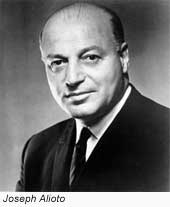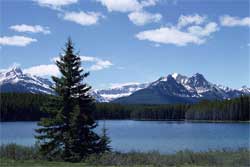Earth Day is a name used by two different observances held annually in the (northern) spring, both intended to inspire awareness of and appreciation for the Earth's environment. Earth Day is in the public domain and open to all persons to shape. Some grassroots Earth Day organizers seek to move the date of the observance to the Summer Solstice, to take advantage of the warm temperatures in the Northern hemisphere (where most people live) to create greater participation.

 John McConnell first introduced the idea of a global holiday called Earth Day at a UNESCO Conference on the Environment in 1969, the same year that he designed the Earth flag. The first Earth Day proclamation was issued by San Francisco Mayor Joseph Alioto on March 21, 1970. U Thant supported John McConnell’s global initiative to celebrate this annual spring equinox event. In his statement on March 21, 1971, U Thant said: “May there only be peaceful and cheerful Earth Days to come for our beautiful Spaceship Earth as it continues to spin and circle in frigid space with its warm and fragile cargo of animate life.” Secretary General Waldheim observed Earth Day with similar ceremonies in 1972. The United Nations Earth Day ceremony continued each year on the day of the March equinox (20th or 21st), with the ringing of the U.N. Peace Bell at the very moment of the equinox. In 1975 the U.S. Congress and President Ford proclaimed and urged observance of Earth Day on the March equinox. John McConnell first introduced the idea of a global holiday called Earth Day at a UNESCO Conference on the Environment in 1969, the same year that he designed the Earth flag. The first Earth Day proclamation was issued by San Francisco Mayor Joseph Alioto on March 21, 1970. U Thant supported John McConnell’s global initiative to celebrate this annual spring equinox event. In his statement on March 21, 1971, U Thant said: “May there only be peaceful and cheerful Earth Days to come for our beautiful Spaceship Earth as it continues to spin and circle in frigid space with its warm and fragile cargo of animate life.” Secretary General Waldheim observed Earth Day with similar ceremonies in 1972. The United Nations Earth Day ceremony continued each year on the day of the March equinox (20th or 21st), with the ringing of the U.N. Peace Bell at the very moment of the equinox. In 1975 the U.S. Congress and President Ford proclaimed and urged observance of Earth Day on the March equinox.
In January 1970, the Environmental Teach-In, decided to call their one-off event on 22 April Earth Day. The successes of that day led to it becoming a regular event. Gaylord Nelson, an environmental activist in the U.S. Senate, took a leading role in organizing the celebration, to demonstrate popular political support for an environmental agenda. Senator Nelson staffed the office with college students and selected Denis Hayes (a Harvard student and Stanford graduate) as coordinator of activities. It was the era of student political activism and outdoor protests that attracted news cameras.
According to Senator Nelson, Earth Day "worked" because of the spontaneous response at the grassroots level. Though he felt his committee had neither the time nor resources to organize the 20 million demonstrators and the thousands of schools and local communities that participated, these things did happen. According to the Senator, "It organized itself."
 The "holiday" proved extremely popular in the United States. The first Earth Day, in 1970, had participants and celebrants in two thousand colleges and universities, roughly ten thousand primary and secondary schools, and hundreds of communities across the U.S. Senator Nelson directly credited the first Earth Day with persuading U.S. politicians that environmental legislation had a substantial, lasting constituency. In 1971 Senator Gaylord Nelson announced an 'Earth Week' — for the third week of April — as a yearly event. The "holiday" proved extremely popular in the United States. The first Earth Day, in 1970, had participants and celebrants in two thousand colleges and universities, roughly ten thousand primary and secondary schools, and hundreds of communities across the U.S. Senator Nelson directly credited the first Earth Day with persuading U.S. politicians that environmental legislation had a substantial, lasting constituency. In 1971 Senator Gaylord Nelson announced an 'Earth Week' — for the third week of April — as a yearly event.

Many important laws were passed by the Congress in the wake of the 1970 Earth Day, including the Clean Air Act, laws to protect drinking water, wild lands and the ocean. The EPA was created within three years of the first Earth Day.
|